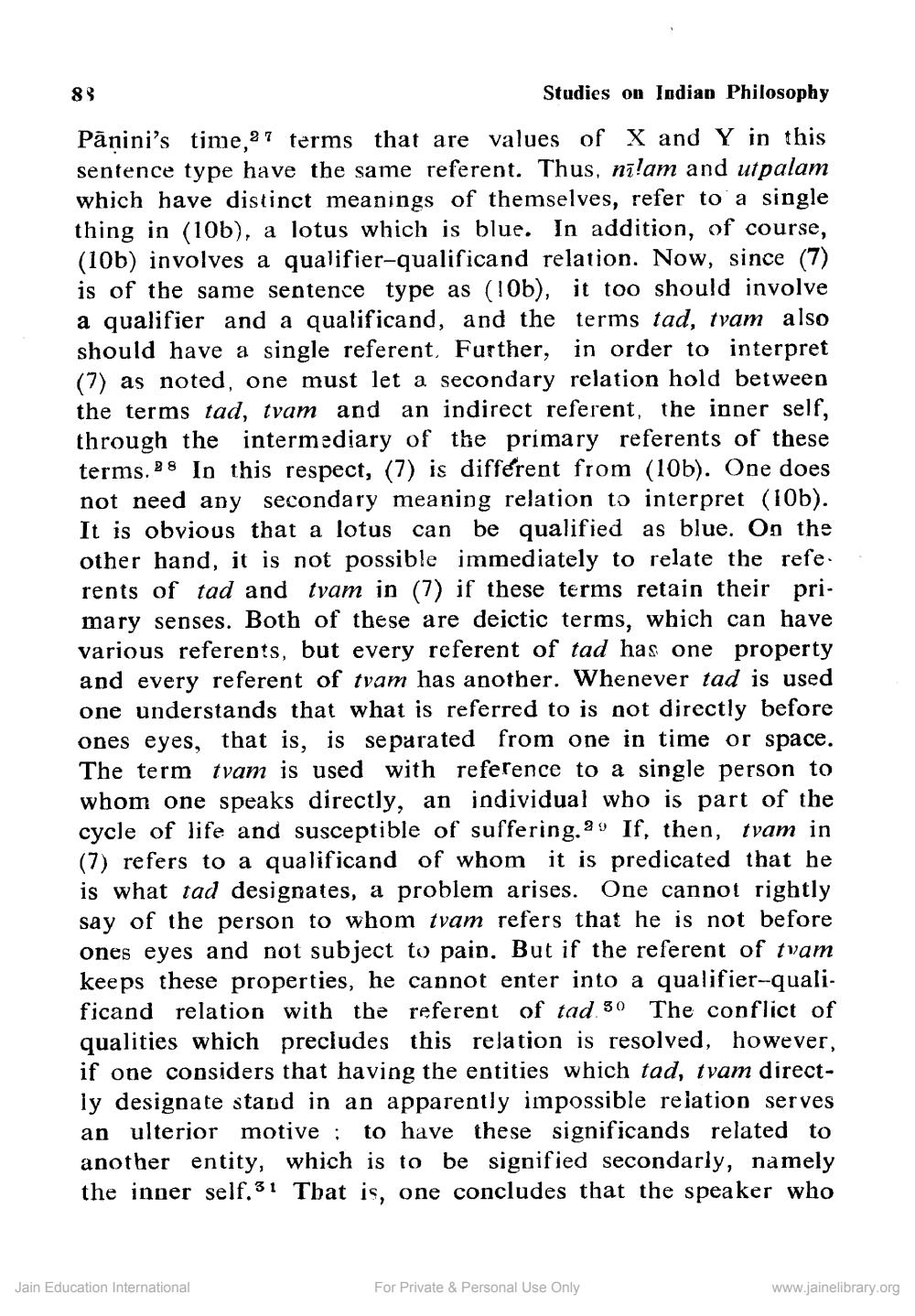________________
Studies on Indian Philosophy Panini's time,27 terms that are values of X and Y in this sentence type have the same referent. Thus, nilam and utpalam which have distinct meanings of themselves, refer to a single thing in (10b), a lotus which is blue. In addition, of course, (10b) involves a qualifier-qualificand relation. Now, since (7) is of the same sentence type as (10b), it too should involve a qualifier and a qualificand, and the terms tad, tvam also should have a single referent. Further, in order to interpret (7) as noted, one must let a secondary relation hold between the terms tad, tvam and an indirect referent, the inner self, through the intermediary of the primary referents of these terms. 28 In this respect, (7) is different from (10b). One does not need any secondary meaning relation to interpret (10b). It is obvious that a lotus can be qualified as blue. On the other hand, it is not possible immediately to relate the referents of tad and tvam in (7) if these terms retain their primary senses. Both of these are deictic terms, which can have various referents, but every referent of tad has one property and every referent of tvam has another. Whenever tad is used one understands that what is referred to is not directly before ones eyes, that is, is separated from one in time or space. The term tvam is used with reference to a single person to whom one speaks directly, an individual who is part of the cycle of life and susceptible of suffering. If, then, tvam in (7) refers to a qualificand of whom it is predicated that he is what tad designates, a problem arises. One cannot rightly say of the person to whom tvam refers that he is not before ones eyes and not subject to pain. But if the referent of tvam keeps these properties, he cannot enter into a qualifier-qualificand relation with the referent of tad 50 The conflict of qualities which precludes this relation is resolved, however, if one considers that having the entities which tad, tvam directly designate stand in an apparently impossible relation serves an ulterior motive; to have these significands related to another entity, which is to be signified secondarly, namely the inner self.31 That is, one concludes that the speaker who
89
Jain Education International
For Private & Personal Use Only
www.jainelibrary.org




